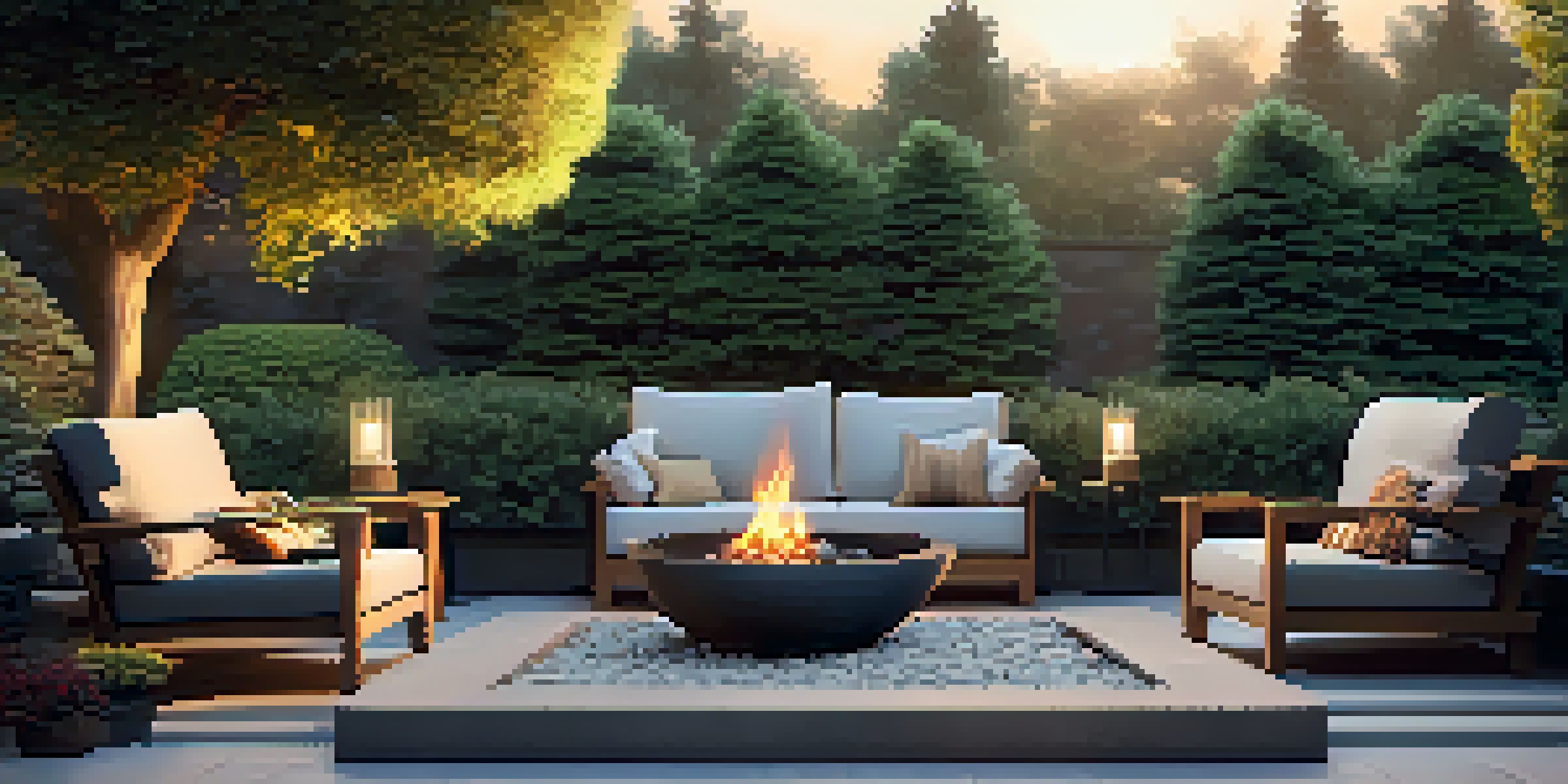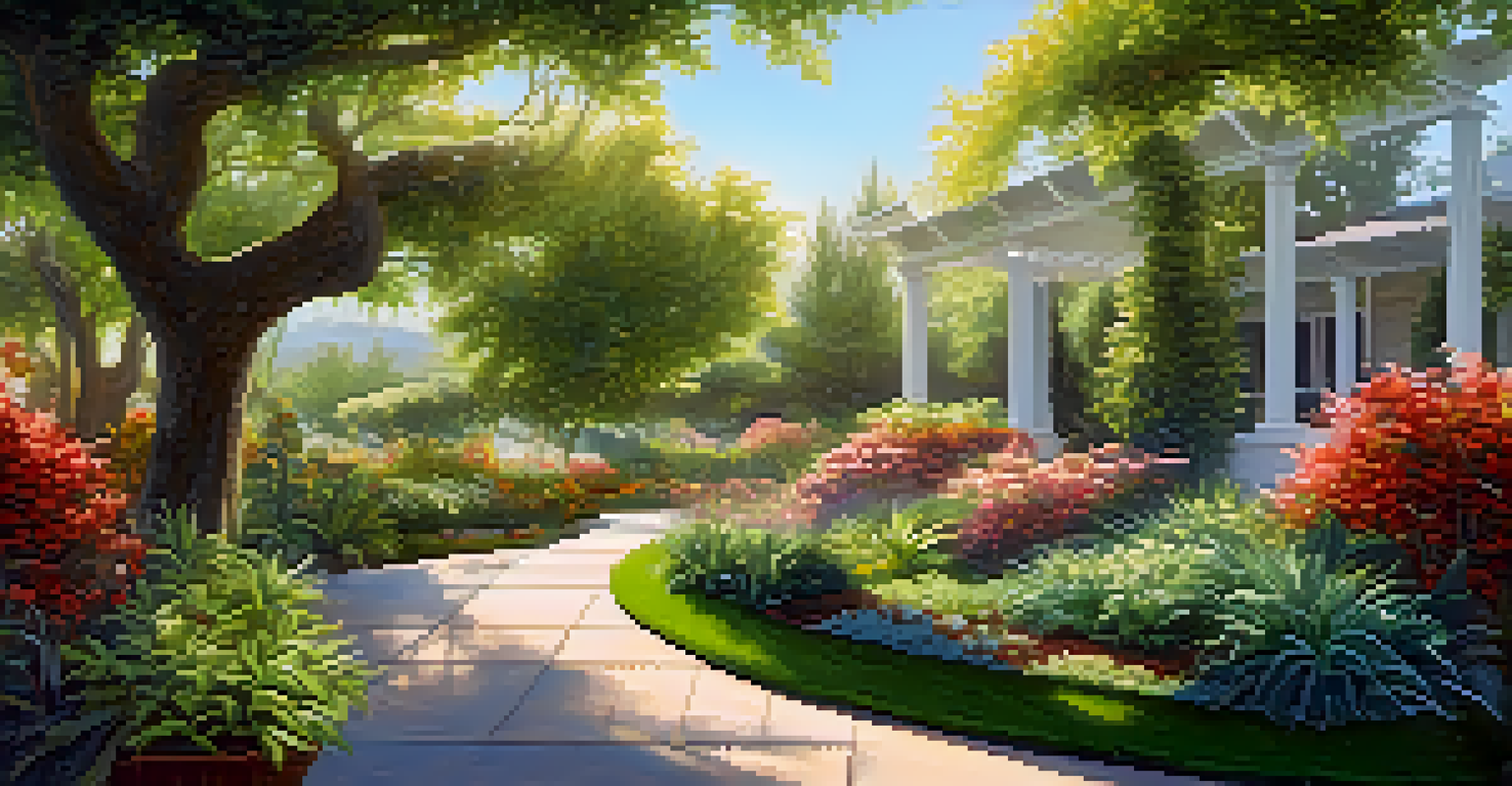Incorporating Fire Safety in Outdoor Designs

Understanding the Importance of Fire Safety in Outdoor Spaces
When designing outdoor spaces, fire safety should be a top priority. After all, outdoor areas often combine natural elements with human activities that can inadvertently lead to fire hazards. From barbecues to fire pits, understanding the risks is essential for creating a safe environment.
Fire safety is not just a set of rules; it's a mindset that we must adopt to protect ourselves and our loved ones.
Incorporating fire safety in design is not just about prevention; it's about ensuring peace of mind for everyone who uses the space. By being proactive, you can mitigate potential dangers and create a more enjoyable outdoor experience. Think of it like installing smoke detectors in your home—it's a small step that brings significant security.
Moreover, as climate change continues to affect weather patterns, the risk of wildfires is on the rise. Being aware of these challenges and adapting your outdoor design accordingly is crucial. Emphasizing fire safety today can help protect your space tomorrow.
Choosing Fire-Resistant Materials for Outdoor Structures
One of the best ways to enhance fire safety in outdoor designs is by selecting fire-resistant materials. This can include using bricks, stones, or specially treated woods that are less likely to ignite. These materials not only provide safety but can also add aesthetic value to your space.

For example, if you're planning to build a deck or a gazebo, consider composite decking materials that are designed to withstand high temperatures. These materials not only resist flames but often require less maintenance, giving you peace of mind and more time to enjoy your outdoor area.
Prioritize Fire Safety Outdoors
Incorporating fire safety into outdoor designs ensures a secure environment, protecting against potential hazards.
In addition to choosing the right materials, it's essential to keep flammable items away from these structures. Regularly clear debris, such as leaves or branches, to reduce fire risk. This simple practice can make a significant difference in protecting your investment.
Strategically Placing Fire Pits and Grills
When incorporating fire pits or grills into your outdoor design, placement is everything. Ideally, these features should be located at least 10 feet away from any structures or overhanging trees to minimize the risk of fire spread. Think of it as giving your fire a safe 'breathing room' to operate without endangering nearby elements.
An ounce of prevention is worth a pound of cure.
Additionally, consider the wind direction when positioning these features. A gentle breeze can carry sparks, so situating a fire pit in a sheltered area can help contain flames. It can turn your outdoor space into a cozy gathering spot while keeping safety front and center.
Don’t forget about accessibility as well. Ensure that fire extinguishers or water sources are within easy reach, just in case an emergency arises. This preparedness can make all the difference in maintaining a safe and enjoyable atmosphere.
Creating Defensible Space Around Your Property
Defensible space is a concept that emphasizes creating a buffer between your outdoor space and potential fire hazards. This involves landscaping techniques like clearing away dead vegetation and maintaining a well-trimmed lawn. Think of it as establishing a protective zone that can help stop a fire before it reaches your home.
You can also incorporate fire-resistant plants in your landscaping. Low-growing, moist vegetation can act as a natural barrier and reduce fire risk. By choosing the right plants, you can enhance the beauty of your outdoor area while contributing to its safety.
Use Fire-Resistant Materials
Choosing fire-resistant materials for structures can enhance safety and add aesthetic value to outdoor spaces.
Maintaining this defensible space is an ongoing task. Regularly assess your landscape, especially after storms or dry spells, to ensure it remains a protective barrier. A little upkeep goes a long way in safeguarding your property.
Implementing Smart Irrigation Systems for Fire Prevention
Smart irrigation systems can play a crucial role in fire safety by maintaining moisture levels in your garden and landscaping. These systems can automatically adjust watering schedules based on weather conditions, ensuring that your plants remain hydrated without overwatering. Think of it as a proactive approach to keeping your landscape vibrant while reducing fire risk.
By using moisture sensors and timers, you can optimize water usage and create an environment less conducive to wildfires. Keeping foliage lush not only enhances aesthetics but can also act as a natural fire barrier. This is especially important in regions prone to drought where dry plants can quickly become fire hazards.
Moreover, regular maintenance of irrigation systems is essential. Ensure that hoses and pipelines are intact and functioning correctly to avoid dry patches in your landscape. A well-watered garden is not only beautiful but also a safer outdoor space.
Educating Family and Guests About Fire Safety
Creating a safe outdoor environment is a team effort, and educating family and guests about fire safety is essential. This means discussing safe practices around fire pits, grills, and other heat sources. By sharing knowledge, you empower everyone to contribute to a safer atmosphere.
Consider hosting a casual gathering where you talk about fire safety measures and demonstrate how to use fire extinguishers or emergency equipment. This can be a fun and engaging way to ensure everyone knows what to do in case of an emergency. Plus, it sets a responsible tone for your outdoor activities.
Educate on Fire Safety Practices
Educating family and guests about fire safety creates a culture of awareness that contributes to a safer outdoor experience.
Remember, fire safety doesn’t have to be a daunting subject. By making it a regular part of your outdoor conversations, you create a culture of awareness that benefits everyone. After all, safety should always come first when enjoying the great outdoors.
Regular Inspections and Maintenance for Fire Safety
Regular inspections and maintenance of outdoor areas are vital for reducing fire risks. This includes checking fire pits, grills, and any other heat-producing features for wear and tear. Just like you’d schedule routine car maintenance, setting aside time for outdoor upkeep can prevent larger problems down the line.
Look for signs of damage, such as rust or deterioration in your outdoor appliances. Addressing these issues promptly can help avoid potential safety hazards. Think of it as giving your outdoor space a health check-up, ensuring everything is in top shape for safe use.

Additionally, consider making fire safety inspections a seasonal routine. Checking your landscape after harsh weather can help identify risks before they become serious. A proactive approach can keep your outdoor space enjoyable and safe for years to come.